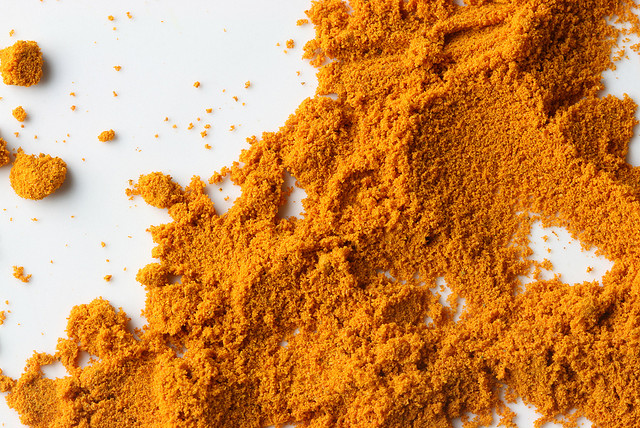One of the most inspiring aspects of Ayurveda, the ancient medical science of life from India, is how it empowers us to take health into our own hands in all respects.
As someone who has tried every product out there to combat acne-prone skin as a teenager and in my early 20s, I was very grateful to discover an abundance of skincare recipes that can be created right from the comforts of one’s own kitchen from the Ayurvedic pantheon.
Now that I am in my late 20s, not only have my skin and wallet thanked me for the all-natural ways I have adopted to care for my skin, but people actually think I look approximately ten years younger than I am.
The skin is the largest organ of the body.
In Ayurveda, the quality of one’s skin is considered a reflection of one’s overall digestion. Not only does what we put inside our body matter; so does what we put onto our skin. The skin, like the stomach, has to digest whatever it comes into contact with.
One of the keys to skincare in Ayurveda is that we would never apply something onto our body that we would not want to consume orally. In other words, if we aren’t able to safely eat something, we won’t put it onto our skin either.
Here is one of my favorite Ayurvedic facial skincare recipes that I make and appreciate for its anti-acne and anti-aging qualities. It is all-natural and made up of some wonderful ingredients that are just as beneficial for you when eaten as they are when applied topically on your skin.
Ingredients:
1. Sandalwood Powder
Sandalwood (called Chandan in Sanskrit) is one of the most popular Ayurvedic herbs for beauty. It is cooling, soothing, and has a pleasant aroma. Its pharmacological actions also include being antibacterial, antiviral, antifungal, blood purifying and intellect promoting. It is often used therapeutically in bleeding and burning conditions of the body. Sandalwood also has a quality called ahladana in Sanskrit, which means it gives happiness. Consumed internally (usually with coconut water), sandalwood gives relief to excessive thirst.
2. Turmeric
One of the main actions of turmeric is called varnya in Sanskrit, which means it improves the complexion, tone, and texture of the skin. It is an antioxidant, antiallergenic, antimicrobial herb that supports us in building immunity inside the body (when consumed internally as part of many Ayurvedic meal recipes). Turmeric additionally greatly benefits the lungs and helps in diseases of the blood, such as anemia. Turmeric’s beautifying properties are so well-known by Indians that there is an entire ritual dedicated to applying turmeric-based skin recipes onto the bride’s skin the day before she gets married.
3. Saffron
Saffron is another very popular Ayurvedic beauty enhancer. Have you ever seen the red dots that Indian women wear on their foreheads between the eyebrows? Nowadays, this is for purely cosmetic value (and created out of a sticky material to allow it to remain on the forehead). Traditionally, however, saffron was worn on the forehead as what is called a bindi (a small red dot between the eyebrows), which also had the added benefit of helping prevent and heal headaches. Saffron is also used as a great rejuvenating herb mixed into warm milk, in which it serves as a rejuvenating herb in cases of debility. Saffron added to warm milk also helps alleviate colds in children.
4. Masoor Dal
This type of lentil can be found in all Indian stores. It is a reddish-orange colored lentil that purifies the blood and is particularly beneficial for fevers when cooked and consumed as food. There are three bioforces in the body, according to Ayurveda. The main dosha (bioforce) involved in acne is called pitta dosha. An imbalanced pitta dosha is one of the main causative factors contributing to the presence of acne. By balancing pitta dosha, masoor dal is a great anti-acne ingredient.
~
How to make & apply it:
1. Place 1 cup of masoor dal into a coffee grinder or blender.
2. Add 2 teaspoons of turmeric powder.
3. Put 15-20 strands of saffron into the mix.
4. Add 2 teaspoons of sandalwood powder.
5. Grind or blend the mixture into a fine powder.
6. Mix a little water into the powder to make a paste.
7. Apply the paste to your face.
8. Keep the facial on for about 5-10 minutes.
9. Rinse off with cool water.
~
Tip: The best time to apply this facial is just prior to your shower in the morning.
~
Start applying some of Ayurveda’s kitchen-based wisdom to your face and say good-bye to years of spending exorbitant amounts of money on skincare products. Now that I’ve transformed my skincare routine, there’s no looking back.
~
References:
Dash, Bhagawan. Materia Medica of Ayurveda. New Delhi: Health & Harmony, 1991.
Hegde, Prakash. A Text Book of Dravyaguna Vijnana. New Delhi: Chaukhamba Publications, 2014.
Paranjpe, Prakash. Ayurvedic Home Remedies. New Delhi: Chaukhamba Sanskrit Pratishthan, 2000.
~
Author: Ananta Ripa Ajmera
Editor: Alli Sarazen
Photo: Steven Jackson/Flickr

 Share on bsky
Share on bsky







Read 11 comments and reply